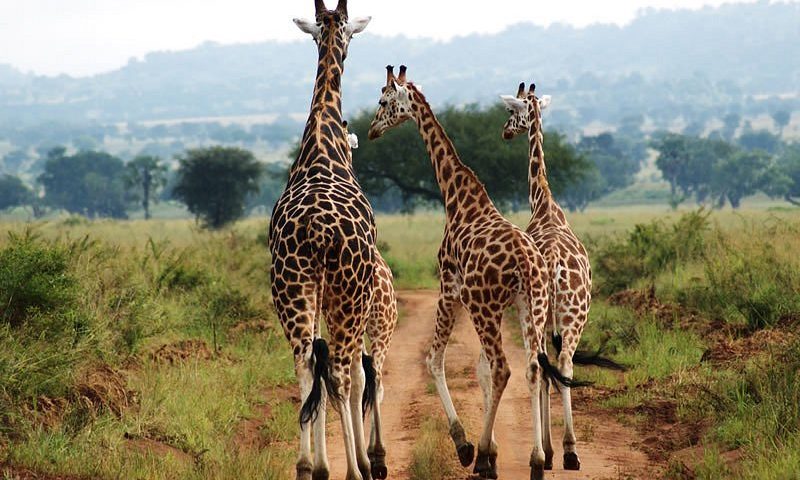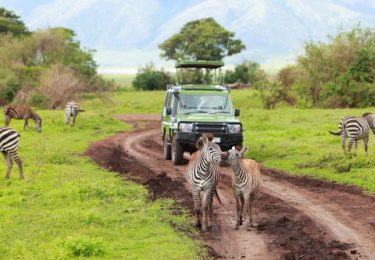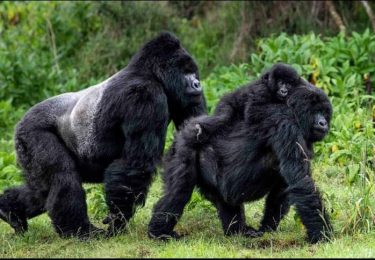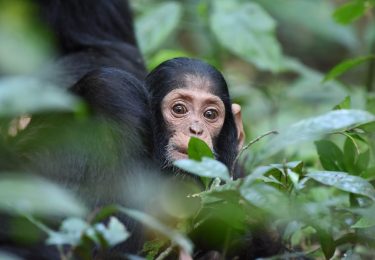- Home
- About Us
- Uganda safaris
- Long Safaris
- Short Safaris
- Day Short Safaris
- 1 Day Entebbe Botanical gardens weekend birding excursion
- I Day Entebbe City Tour
- 1 Day Jinja, Mabira, Ssezibwa Tour
- 1 Day Jinja Source of the Nile tour
- Lake Victoria Sunset Cruises
- 1 Day Kampala City Tour
- 1 Day Mabamba Shoebill Stork And Birding Tour
- 1 Day Makanaga Shoebill And Birding Trip
- 1 Day Ngamba Island Boat And Chimpanzee Excursion
- Other Tours
- Gorilla Safaris
- Uganda Gorilla safaris
- 4 Days Mgahinga Bwindi gorilla and golden monkey trekking safari
- 3 Days Mgahinga Gorilla trekking safari
- 5 Days Mgahinga Gorillas, Golden Monkey And Lake Bunyonyi Tour
- 5 Days Gorillas And Wildlife, L.Mburo, Bwindi and L. Bunyonyi
- 8 Days Wildlife, Gorillas, Golden Monkeys Trip
- 8 Days Gorillas Chimpanzee and wildlife Trekking Tour
- 9 Days Kidepo Valley National park and Bwindi Gorilla Safari. Wildlife and gorillas
- 11 Days Gorilla And Chimpanzee Tracking and wildlife Safari
- Rwanda Gorilla Safaris
- Uganda Gorilla safaris
- National Parks
- Kidepo Safaris
- Queen Elizabath Safaris
- Lake Mburo Safaris
- Mgahinga
- Mgahinga Gorilla National Park
- 3 Days Mgahinga Gorilla trekking safari
- 4 Days Mgahinga Bwindi gorilla and golden monkey trekking safari
- 5 Days Rwand-Uganda Gorilla, Golden Monkey trekking trip
- 5 Days Mgahinga Gorillas, Golden Monkey And Lake Bunyonyi Tour
- 8 Days Wildlife, Gorillas, Golden Monkeys Trip
- Our Blog
- Other Safaris
- Home
- About Us
- Uganda safaris
- Long Safaris
- Short Safaris
- Day Short Safaris
- 1 Day Entebbe Botanical gardens weekend birding excursion
- I Day Entebbe City Tour
- 1 Day Jinja, Mabira, Ssezibwa Tour
- 1 Day Jinja Source of the Nile tour
- Lake Victoria Sunset Cruises
- 1 Day Kampala City Tour
- 1 Day Mabamba Shoebill Stork And Birding Tour
- 1 Day Makanaga Shoebill And Birding Trip
- 1 Day Ngamba Island Boat And Chimpanzee Excursion
- Other Tours
- Gorilla Safaris
- Uganda Gorilla safaris
- 4 Days Mgahinga Bwindi gorilla and golden monkey trekking safari
- 3 Days Mgahinga Gorilla trekking safari
- 5 Days Mgahinga Gorillas, Golden Monkey And Lake Bunyonyi Tour
- 5 Days Gorillas And Wildlife, L.Mburo, Bwindi and L. Bunyonyi
- 8 Days Wildlife, Gorillas, Golden Monkeys Trip
- 8 Days Gorillas Chimpanzee and wildlife Trekking Tour
- 9 Days Kidepo Valley National park and Bwindi Gorilla Safari. Wildlife and gorillas
- 11 Days Gorilla And Chimpanzee Tracking and wildlife Safari
- Rwanda Gorilla Safaris
- Uganda Gorilla safaris
- National Parks
- Kidepo Safaris
- Queen Elizabath Safaris
- Lake Mburo Safaris
- Mgahinga
- Mgahinga Gorilla National Park
- 3 Days Mgahinga Gorilla trekking safari
- 4 Days Mgahinga Bwindi gorilla and golden monkey trekking safari
- 5 Days Rwand-Uganda Gorilla, Golden Monkey trekking trip
- 5 Days Mgahinga Gorillas, Golden Monkey And Lake Bunyonyi Tour
- 8 Days Wildlife, Gorillas, Golden Monkeys Trip
- Our Blog
- Other Safaris
KIDEPO VALLEY NATIONAL PARK

8 Days Uganda safari
August 5, 2020
LAKE MBURO NATIONAL PARK
January 23, 2024Kidepo valley national park also known as the True African Wilderness is Uganda’s most isolated national park found in the country’s northeastern corner, close to Kenya and South Sudan in the remote, sparsely populated Karamoja region. It was established in 1962 by Milton Obote and it’s located near Karenga and Kaabong districts, covering an area of 1442 square kilometers and elevated at a height of 900-1200 meters above sea level. Kidepo is the most distant, isolated and least visited among the 10 Uganda National Parks
One of East Africa’s most magnificent wildernesses, Kidepo landscape is one of tremendous drama with grasslands roamed by big game favorites extending towards rugged mountains in all points of the compass. The park is an open tree savannah, with difference in rainfall and annual average of 90 centimeters in Narus and 64 centimeters n Kidepo basin vegetation and animal population.
The park consists of two major valley systems; the Narus valley which is in the southern part of the park containing the parks only permanent water points and wildlife congregates and the Kidepo valley which is dry but massive on scenery. The soil in the Narus valley is loam while the soil in the Kidepo valley is black chalky clay and sandy clay. Kidepo Valley National Park has also got a hot spring called the “Kanangorok hot spring” which is the most permanent source of water in the park.
Kidepo is also an area of rich cultural interest for plains around the park are dotted with the Manyattas (homesteads) of Karamoja’s fiercely traditional pastoralists. The local communities around the park include pastoral Karamajong people who are similar to the Maasai of Kenya and the IK people who are known to be hunter-gatherers whose survival is threatened.
An impressive variety of wildlife species survive in kidepo’s harsh, semi-arid environment. Grasslands bush and forest habitats in the 1442 square kilometers park support over 86 mammal species. Kidepo Valley National Park is the only Ugandan refuge for Cheetah, bat-eared fox, caracal striped hyena while eland and zebra only occur in Kidepo valley National Park and Lake Mburo National Park. Buffalo, elephant, lion, Rothschild’s giraffe, leopards, white tailed mongoose, Senegal galago, oribis, waterbucks, spotted hyena, black and side-stripped jackal are also present.
The park has over 500 bird species making it second to Queen Elizabeth National Park. A distinctive bird list includes over 100 dry country residents of northern Uganda and Kenya including many that are endemic to the Kidepo region such as the Ostrich, Clapperton’s francolin, Rose ringed parakeets and Karamoja apalis. Other birds include; the Secretary bird, Red-throated bee-eaters, Kori bustard, Abyssinian roller, Pygmy falcon, Black headed plover, Scarlet-chested sunbird and the Abyssinian ground hornbill. The park is also notable for 56 raptor species like the rare lappet-faced vulture, lesser kestrel and Denham’s bustard.
Activities in Kidepo Valley National Park
Game drives
Game drives in Kidepo Valley National Park are carried out in both the Narus valley and the Kidepo valley. The park harbors a great diversity of animal species that include carnivores, primates and ungulates. During the game drive, you will be able to spot mammals like lions, cheetahs, caracals, buffalos, elephants, lesser kudu, striped hyena, Grant’s gazelle, beisa Oryx, bat-eared fox, klipspringer, waterbuck, zebra, bohor reedbucks and also lots of bird species. Tourists can enjoy these games drives in different sessions; the morning game drive, evening game drive and also a full day game drive whereby all these game drives are enjoyed with the guidance of an experienced ranger.
Nature walks
Opportunities for guided walks range from short nature walks around Apoka Rest Camp to loner walks through the open grasslands of East Kakine and Rionomoe trail which follows the southern side of the Narus valley. The Morungule range which rises from the plains to the north east of Apoka can also be explored on foot with a ranger guide escort.
Bird watching
Kidepo Valley National Park is a birder’s paradise for the bird lovers because it harbors over 500 bird species with approximately 23 being found only in Kidepo. Bird species you will see while on your birding safari may include; Clapperton’s francolin, Rose ringed parakeets, common ostrich, Karamoja apalis, Secretary bird, Pygmy falcon, Black headed plover, Scarlet-chested sunbird, Red-throated bee-eaters, Kori bustard, Abyssinian roller, Abyssinian ground hornbill, Taita fiscal, Rufous chatterer, Yellow-billed shrike, Little weaver, Silver bird, Vinaceous dove, Woodpecker, Yellow-rumped seedeater, Starlings mosque swallow, Kori, Singing bush lark, Fox kestrel, Jackson’s hornbill, African swallow-tailed kite, Red-fronted barbets, Stone partridge to mention a few.
Community/cultural tours
For the tourists interested in the cultural tours while in Kidepo Valley National Park, you will visit the local people of the Lorukul cultural group who are located just outside the park. While here, you will interact with the locals as you get an opportunity to visit their homesteads (Manyattas) and also watch their dance performances which you can join if interested because it’s a great experience.
BEST TIME TO VISIT THE PARK
Kidepo valley national park can be visited anytime of the year however, wildlife viewing is best done during the dry seasons in the months of; July, August, September to March because during this period, there is less rainfall in the park therefore vegetation will be short giving you a clear view of different wildlife. Another reason for visiting this national park during the dry season is that, animals tend to gather around the Narus valley to drink water which gives you great opportunities to enjoy great views of lots of animals.





